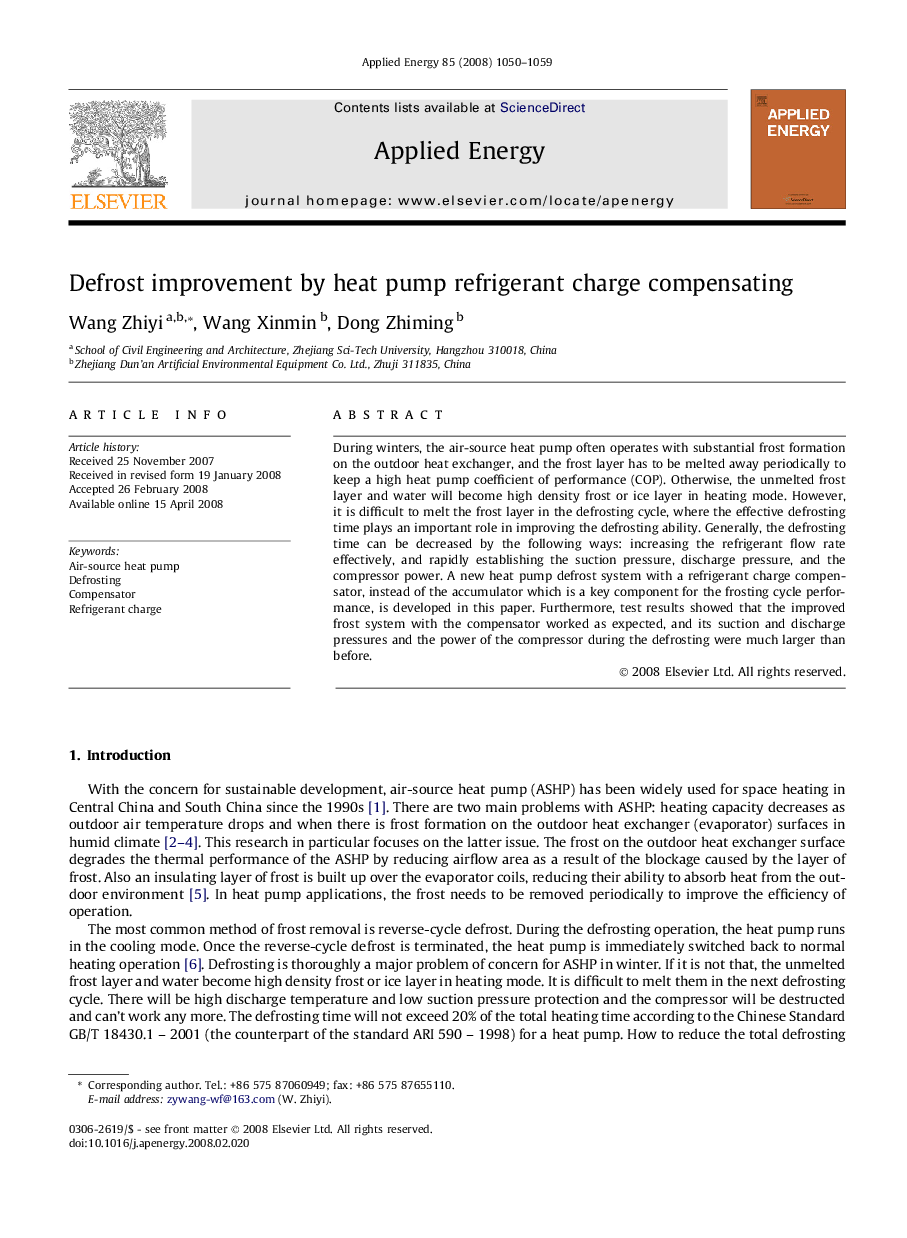| Article ID | Journal | Published Year | Pages | File Type |
|---|---|---|---|---|
| 245216 | Applied Energy | 2008 | 10 Pages |
During winters, the air-source heat pump often operates with substantial frost formation on the outdoor heat exchanger, and the frost layer has to be melted away periodically to keep a high heat pump coefficient of performance (COP). Otherwise, the unmelted frost layer and water will become high density frost or ice layer in heating mode. However, it is difficult to melt the frost layer in the defrosting cycle, where the effective defrosting time plays an important role in improving the defrosting ability. Generally, the defrosting time can be decreased by the following ways: increasing the refrigerant flow rate effectively, and rapidly establishing the suction pressure, discharge pressure, and the compressor power. A new heat pump defrost system with a refrigerant charge compensator, instead of the accumulator which is a key component for the frosting cycle performance, is developed in this paper. Furthermore, test results showed that the improved frost system with the compensator worked as expected, and its suction and discharge pressures and the power of the compressor during the defrosting were much larger than before.
